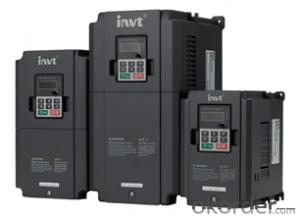Welcome to the world of solar energy, where harnessing the power of the sun is not just an option but a lifestyle choice that is both cost-effective and environmentally friendly. In this article, we’ll explore the various ways you can integrate solar solutions into your home, making it a more sustainable and energy-efficient space.
Why Choose Solar Energy?
Solar energy is a renewable resource that is abundant and free. Unlike fossil fuels, it won’t run out, and it doesn’t produce harmful emissions. By choosing solar energy, you’re making a commitment to reducing your carbon footprint and contributing to a healthier planet. Plus, solar panels can significantly reduce your electricity bills, providing you with long-term savings.
Understanding Solar Panels
Before diving into the different types of solar solutions, it’s essential to understand what solar panels are and how they work. Solar panels, also known as photovoltaic (PV) panels, convert sunlight directly into electricity. They consist of semiconductor materials, usually silicon cells, which absorb photons from sunlight and release electrons, creating an electric current.
Types of Solar Panels
There are various types of solar panels available in the market, each with its own advantages and disadvantages. The three main types are monocrystalline, polycrystalline, and thin-film panels. Monocrystalline panels are the most efficient but also the most expensive. Polycrystalline panels are less efficient but more affordable. Thin-film panels are the least efficient but can be a good option for flexible applications or when space is limited.
Solar Panel Installation
Installing solar panels is a process that requires careful planning and consideration. You’ll need to assess your home’s energy needs, the available sunlight, and the best location for the panels. It’s also crucial to choose a reputable installer to ensure the panels are correctly installed and functioning optimally.
Going Off-Grid vs. Grid-Tied Systems
When considering solar energy for your home, you have two main options: going off-grid or staying grid-tied. An off-grid system is entirely independent of the utility grid and requires a battery storage system to store excess energy. This option is ideal for remote locations or if you want complete energy independence. A grid-tied system, on the other hand, remains connected to the grid and allows you to sell excess energy back to the utility company.
Energy Storage Options
With solar energy, storage is a critical component, especially if you’re considering an off-grid system. Batteries are the most common storage solution, but they come with different technologies, capacities, and costs. Lead-acid batteries are the most affordable but have a shorter lifespan. Lithium-ion batteries are more expensive but offer longer life and higher efficiency.
Incentives and Financing Options
One of the significant benefits of going solar is the availability of incentives and financing options. Many governments offer tax credits, rebates, and grants to encourage the adoption of solar energy. Additionally, solar leasing and power purchase agreements (PPAs) are popular financing options that can make solar more accessible.
Maintenance and Longevity
Solar panels are low-maintenance, but they do require occasional cleaning and inspection to ensure optimal performance. With proper care, solar panels can last for 25-30 years, providing a long-term return on your investment.
The Impact of Solar Energy on Your Home
Implementing solar solutions in your home can have a profound impact. Not only does it reduce your reliance on non-renewable energy sources, but it also increases the value of your property. Moreover, the satisfaction of generating your own clean energy is immeasurable.
Solar-Powered Appliances
To maximize the benefits of solar energy, consider investing in solar-powered appliances. From solar water heaters to solar chargers for your devices, these appliances can further reduce your energy consumption and bills.
The Future of Solar Energy
As technology advances, the efficiency and affordability of solar panels continue to improve. The future of solar energy is bright, with more innovative solutions and applications on the horizon.
Conclusion
Embracing solar energy at home is a smart, cost-effective decision that benefits both you and the environment. By understanding the different types of solar panels, installation processes, and the various options for energy storage and financing, you can make an informed decision about incorporating solar solutions into your home. Remember, every step towards solar energy is a step towards a more sustainable future.

